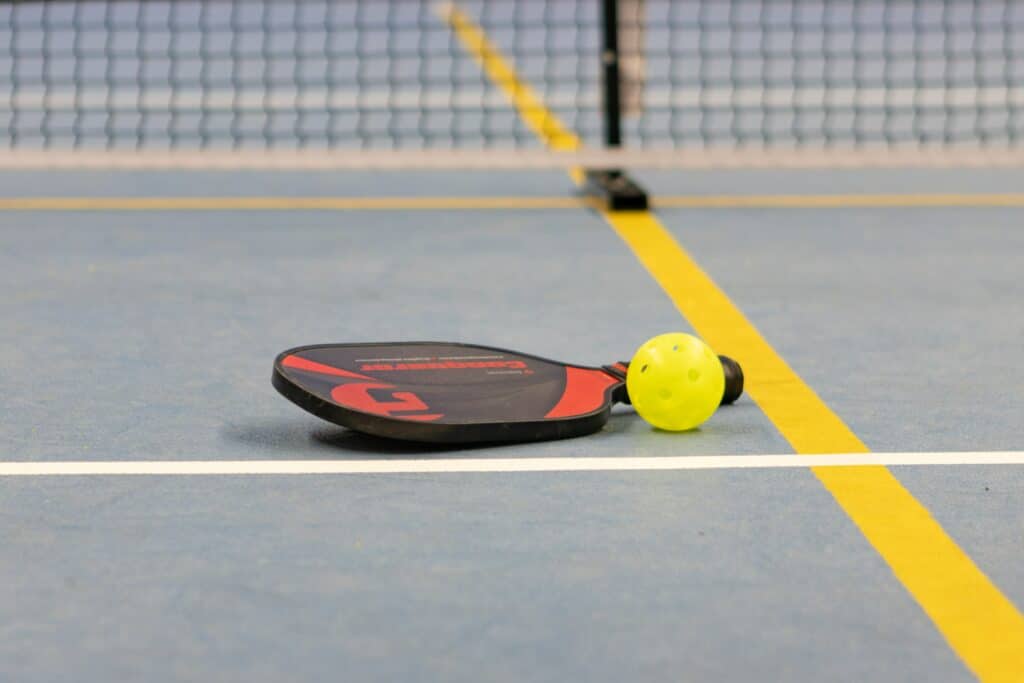 photo: unsplash.com
photo: unsplash.com
Stay in the loop!
Want to be updated when we publish? Be sure to sign up for our newsletter. No spam, we promise!
How Often Should I Change My Grip?
Check the grip regularly for signs of wear. A worn-out grip can reduce your paddle control and increase the chances of hand fatigue or blisters. Change your grip as often as needed. Many things can affect the speed of grip including humidity, dirt, sweat and sunscreen. Some people change every time they play and others once a month. It's a case of finding what works for you and how various conditions affect your grip. I personally change mine once every few days.
Consider using an overgrip. It's a much easier, cheaper and faster way to replace your grip if you play regularly. It allows you to adjust the thickness of the handle to your preference. You can also adjust the grip tackiness depending on the conditions you are playing in.
Here's a video explaining how to replace an overgrip:
How Do I Protect My Paddle?
Avoid Ground Impact and be careful not to hit or scrape the paddle. This can lead to scratches or damages on the paddle face, affecting your shots. It can also cause the paddle to come apart at the edge. Adding an edge guard will provide extra protection.
How Should I Store My Paddle?
Extreme temperatures can affect your paddle’s structural integrity. Ensure you store it in a cool, dry place, away from direct sunlight. Avoid leaving your paddle in the car, especially during hot or freezing days. Even leaving you bag containing your paddle in the hot sun can do some damage, so try to keep it in the shade. Use a protective cover or bag when you're not using your paddle. This helps prevent scratches, dings, or any other external damage.
How Do I Protect My Paddle Core?
Most paddles are designed to resist moderate moisture, they are not waterproof. Avoid playing in the rain or storing your paddle in damp places, as moisture can affect the paddle's core. Certainly don't take it to the beach! Regularly inspect your paddle for delamination or any other structural issues. Delamination (separation between the paddle's layers) can affect the paddle's performance and might need professional repair.
How Do I Clean My Paddle?
Sweat, dirt, and dust can accumulate on the paddle's face. You can buy special paddle cleaner blocks which help remove more stubborn marks from the surface. Using a gentle solution of water and mild soap, will get rid of most dust and dirt. Always ensure that you dry it with a soft towel or let it air dry. Refrain from using abrasive cleaners or chemicals that could damage the surface of the paddle or compromise its grip.
Summary
A well-maintained pickleball paddle not only ensures an optimal playing experience but also saves you money in the long run by reducing the frequency of replacements. Remember, a paddle is an extension of the player. By caring for it, you're also investing in your performance on the court. Respect your equipment, and it will certainly reward you during those crucial match points!
FAQs
-
How often should I change my grip?
Check the grip regularly for signs of wear. Factors like humidity, dirt, sweat, and sunscreen can affect its longevity. Some players change their grip every time they play, while others do it once a month. Find what works best for you.
-
How do I protect my paddle?
Avoid hitting or scraping the paddle on the ground to prevent scratches or damage. Adding an edge guard can provide extra protection. This helps maintain your paddle’s performance and longevity.
-
How should I store my paddle?
Store your paddle in a cool, dry place, away from direct sunlight and extreme temperatures. Avoid leaving it in a car during hot or freezing days. Use a protective cover or bag to prevent scratches and external damage.
-
How do I protect my paddle core?
Avoid moisture, as paddles are not waterproof. Don’t play in the rain or store your paddle in damp places. Regularly inspect for delamination or structural issues that might need professional repair.
-
How do I clean my paddle?
Use a gentle solution of water and mild soap to remove dust and dirt. Dry it with a soft towel or let it air dry. Avoid using abrasive cleaners or chemicals that could damage the paddle’s surface or compromise its grip.
Links Related to This Article
Enjoyed this article?
Be sure to sign up for our newsletter and we'll keep you up to date about new posts


